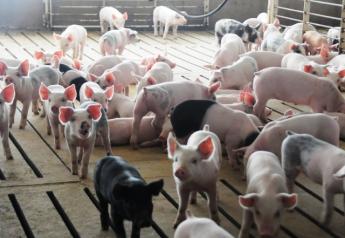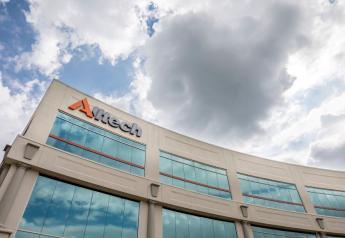How Do We Build a More Resilient Supply Chain?

Do you remember what it felt like to see news footage of empty grocery shelves last spring? For the majority of U.S. consumers, this was both a haunting and humbling experience.
The food supply chain adapted to that disruption relatively quickly. However, the pandemic revealed a bit of complacency in the chain, said Steve Nicholson, vice president and senior analyst for grains and oilseeds at Rabo AgriFinance, during the Rabobank Food and Agribusiness Summit Markets Forum.
Now the country is abuzz with adjectives such as renovated, flexible, digital, diversified, resilient, nimble, efficient and transparent to describe what our food supply chain needs to become, Nicholson said.
“Somewhere along the way, we seem to have forgotten change is the norm, not the exception. We cannot forget to keep investing and look forward as to what could be around that next corner,” he added.
No one denies the COVID-19 pandemic has ramped up changes that needed to be made in the food supply chain. Will past hesitations be set aside as the industry seeks to find ways to be more resilient in an effort to avoid a repeat of the spring of 2020?
A way to ensure continuity
Without a doubt, technology will play an important role in this transformation, said Christine McCracken, executive director, protein analyst for Rabobank. This year’s market disruption is a reminder of the global complexity of our food systems. What happens in one geography now affects everyone.
“While we can have a view about which of these challenges are temporary, and which are more structural, what is obvious is technology will be part of the solution,” McCracken said.
Agriculture has done a great job of improving efficiencies and limiting resource use through technology. But she stressed there are still vulnerabilities in the supply chain to address.
“We may need to refocus our attention and expand our innovation efforts,” she added. “Whether that's in our packing plants or in our fields, what was once deemed efficient, is now seen as a weakness. We need to consider integrating planning tools which anticipate disruption and provide alternate sourcing and distribution options, while at the same time delivering on the growing calls for transparency from the general public.”
Technology may add cost, but it also ensures continuity of business and helps mitigate risk.
The limitation of labor
Labor challenges aren’t going away in agriculture. Whether it’s the availability of workers or the safety of our workers, McCracken said it will continue to be an ongoing issue for the industry.
“This became a focal point during the pandemic. But it's one area where technology should have the greatest impact whether it's robotic fruit harvesting and sorting equipment in Germany, automation of our U.S. dairy farms or the use of big data in the Southern Hemisphere, we are moving into a new era of technology adoption in agriculture, one that was pulled forward by the pandemic, but was already well underway,” she said.
The choice to automate is a relatively easy one in theory, she added.
“Machines don’t call in sick and they always work nights and weekends,” McCracken said. “But in practice, it isn't always that straightforward. The technologies aren't always competitive, or the trade-offs are too high. It is clear automation – both on our farms and in our plants – must be a priority. And the investments need to be made today.”
Automation obstacles
A myriad of obstacles from aging packing and processing plants to technological capabilities abound. However, McCracken said one of the biggest obstacles is a relatively fixed mindset in an industry that's somewhat slow to change.
“The industry may not be working quite hard enough today to attract the outside-the-box thinkers we need to take the industry to the next level,” she said.
Technology will yield big dividends, not only in building trust with consumers today, but also in providing a safe and sustainable food supply for tomorrow, McCracken continued. It’s time to invest in systems and people to keep agriculture competitive on a global scale.
“The good news is we're seeing all kinds of technologies coming through that address a lot of these vulnerabilities in the food supply chain, but what I think is most exciting is a lot of these developments are coming from people within the industry,” McCracken said.
She emphasized the importance of providing tools to the industry that will help it continue to innovate. This means more training to help people adapt to new technologies as they come available.
“It also goes back to our land-grant universities, technical schools and our high schools. We need to make sure that the next generation of agricultural leaders have the skill set that they need to be able to use and adapt to these new technologies,” McCracken said.
More from Farm Journal's PORK:
Is Technology the Ticket to Improve Livestock Production?
It’s Anyone’s Game: How Will the U.S. Pork Industry Diversify Pork Exports?







